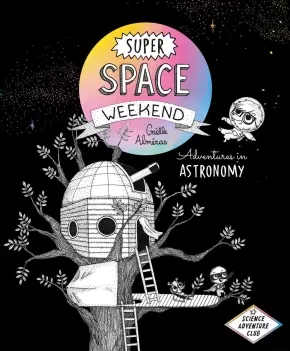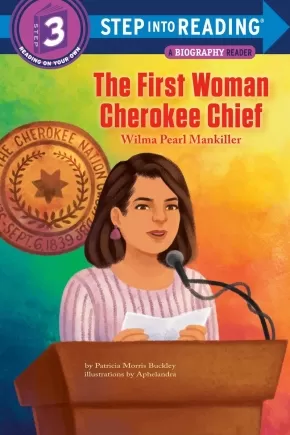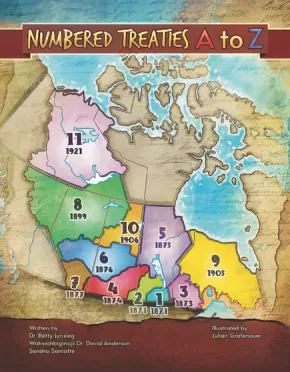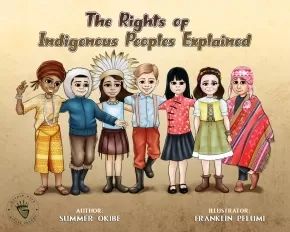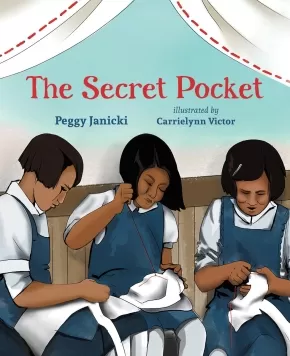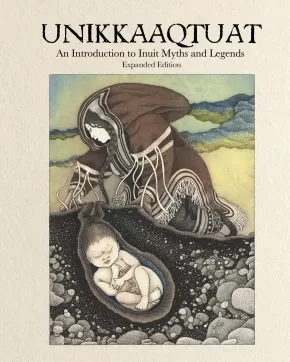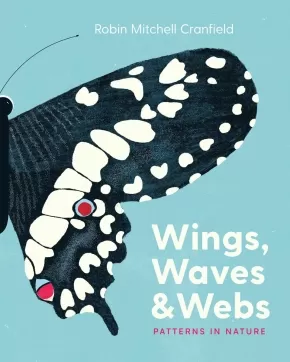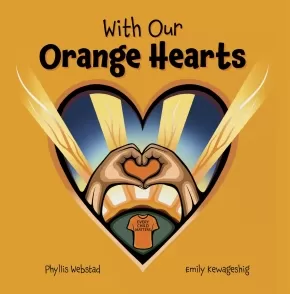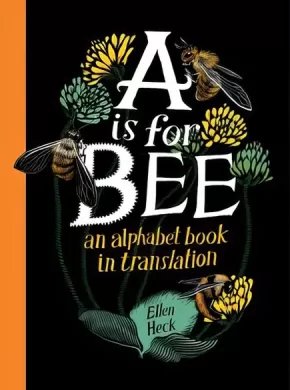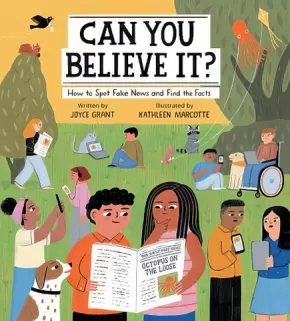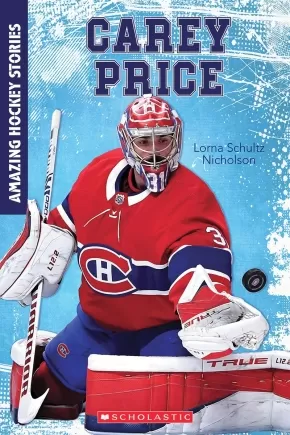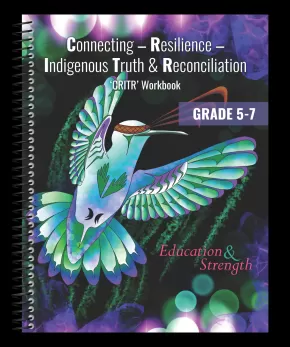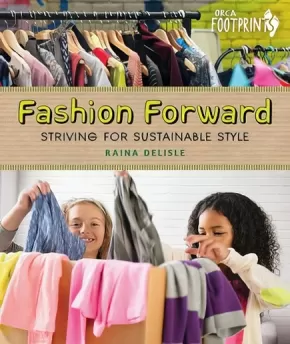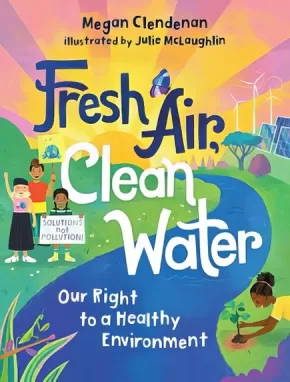
Information Circles
61
-
75
of
192 Results;
Sort By
Go To
of 13
Super Space Weekend: Adventures in Astronomy
$19.95
Artists:
Format:
Paperback
ISBN / Barcode: 9781778401091
Synopsis:
Synopsis:
This non-fiction graphic novel for kids 7+ takes readers on a thrilling voyage through our universe. Get ready for the ultimate astronomy adventure!
It's a beautiful evening when Squeak, Orni, and Castor head out for a weekend of camping. But Squeak has a surprise: he's hosting them all in his observatory, high at the top of a tree. The tree house is delightful—and fully equipped for the most incredible discoveries: in the sky and the stars, through the galaxy and beyond.
Readers join the three friends as they explore the night sky, our solar system, and how our universe was created. Along the way, they share fascinating facts about astronomy, such as how to find the North Star, the difference between comets and asteroids, and the history of space exploration.
Super Space Weekend features:
- Fascinating information about astronomy and space reviewed by scientists, including an astrophysicist and planetary scientist. Discover how to find the North Star, learn about the history of space exploration, and more!
- Comic-style illustrations: shares Squeak, Orni and Castor’s thrilling space adventures through a graphic novel format
Captivating, funny, and highly informative, Super Space Weekend is the ultimate introduction to the world of astronomy.
Educator & Series Information
Recommended for ages 7 to 12.
This book is part of the Science Adventure Club series.
Curriculum Connections: Space Science, Solar System, STEM.
Additional Information
96 pages | 8.00" x 9.75" | Paperback
The First Woman Cherokee Chief: Wilma Pearl Mankiller
$7.99
Format:
Paperback
Text Content Territories:
Indigenous American; Native American; Cherokee; Cherokee Nation (Cherokee Nation of Oklahoma);
ISBN / Barcode: 9780593568507
Synopsis:
Synopsis:
Find out all about Wilma Pearl Mankiller, the first woman Cherokee chief whose image will appear on a 2022 US quarter, in this Step 3 Biography Reader.
In 1985, Wilma Pearl Mankiller became the first woman Principal Chief of the Cherokee Nation. She had to convince her people that the chief should be the best person for the job, man or woman.
Before the English came to what is now the United States, Cherokee women and men shared the leadership of the tribe. This created balance. But the English colonists told the Native People that men should be in charge.
It stayed that way for many years, until Wilma Pearl Mankiller made history. She used the concept of gaduji, of everyone helping each other, to make the Cherokee Nation strong.
Step 3 Readers feature engaging characters in easy-to-follow plots and popular topics—for children who are ready to read on their own.
Reviews
“This work is historically accurate on an underrepresented topic in the curriculum.” —School Library Journal
Educator & Series Information
Recommended for ages 5 to 8.
This book is part of the Step Into Reading series. This series is designed to give every child a successful reading experience. The grade levels are only guides; children will progress through the steps at their own speed, developing confidence in their reading. The F&P Text Level on the back cover serves as another tool to help you choose the right book.
Step 3 Readers feature engaging characters in easy-to-follow plots and popular topics—for children who are ready to read on their own.
Additional Information
48 pages | 6.06" x 9.00" | Paperback
The Numbered Treaties A to Z
$24.95
Artists:
Format:
Paperback
Text Content Territories:
Indigenous Canadian;
ISBN / Barcode: 9781990297342
Synopsis:
Synopsis:
Let us walk together through the ABCs of the Numbered Treaties. We purposefully use the ABC, a constructed Language system from the English Language, to talk back to the Numbered Treaties, so named without reference to our Own Language system or the Land.
First Nations People entered into Treaties and Agreements prior to Confederation and negotiated the Numbered Treaties after the Confederation of Canada in 1867.
Educator Information
Recommended for grades 4 to 6.
Additional Information
Paperback
The Rights of Indigenous Peoples Explained
$27.99
Artists:
Format:
Hardcover
Text Content Territories:
Indigenous;
ISBN / Barcode: 9781738699315
Synopsis:
Synopsis:
Hey Child, I am excited to simplify the United Nations Declaration on the Rights of Indigenous Peoples (UNDRIP) for you. You are special and you deserve to know that the Indigenous People around you have rights. You should, at all times, respect and acknowledge their rights.
Educator Information
Recommended for ages 4 to 6.
Additional Information
40 pages | 8.50" x 11.00" | Hardcover
The Secret Pocket
$21.95
Artists:
Format:
Hardcover
Text Content Territories:
Indigenous Canadian; First Nations; Dene; Dakelh (Carrier);
ISBN / Barcode: 9781459833722
Synopsis:
Synopsis:
The true story of how Indigenous girls at a Canadian residential school sewed secret pockets into their dresses to hide food and survive
Mary was four years old when she was first taken away to the Lejac Indian Residential School. It was far away from her home and family. Always hungry and cold, there was little comfort for young Mary. Speaking Dakelh was forbidden and the nuns and priest were always watching, ready to punish. Mary and the other girls had a genius idea: drawing on the knowledge from their mothers, aunts and grandmothers who were all master sewers, the girls would sew hidden pockets in their clothes to hide food. They secretly gathered materials and sewed at nighttime, then used their pockets to hide apples, carrots and pieces of bread to share with the younger girls.
Based on the author's mother's experience at residential school, The Secret Pocket is a story of survival and resilience in the face of genocide and cruelty. But it's also a celebration of quiet resistance to the injustice of residential schools and how the sewing skills passed down through generations of Indigenous women gave these girls a future, stitch by stitch.
Awards
- 2023 Sunshine Coast Writers and Editors Society (SCWES) Book Awards for BC Authors joint winner
- 2024 Forest of Reading Silver Birch Express Award
Reviews
“In bringing her mother’s story to the world, Peggy Janicki has ignited a powerful fire for intergenerational healing. A vivid illustration of how Traditional Knowledge helped the children at residential schools be heroes for themselves and each other. Not only has Janicki meticulously documented everyday life as experienced by the students of the Lejac residential school but she has also highlighted their ingenious and courageous efforts to survive. Strengths-based, age-appropriate and vividly engaging.”— Christy Jordan-Fenton, award-winning author of Fatty Legs
“Beautifully illustrated and powerfully narrated, The Secret Pocket amplifies the voices and experiences of Indian Residential School Survivors. In doing so, Peggy Janicki and Carrielynn Victor make an important contribution to the work of putting truth before reconciliation.”— Sean Carleton, historian and author of Lessons in Legitimacy: Colonialism, Capitalism, and the Rise of State Schooling in British Columbia
“In this important story of courage and resistance, educator Peggy Janicki shares the story of her mother and other Survivors who sewed secret pockets into their dresses to hide food to feed themselves and others at Lejac residential school. We need to continue to hear these stories and share them with our children so we can move forward in our collective healing.”— Dr. Sara Florence Davidson, co-author of Potlach as Pedagogy: Learning Through Ceremony
“It is through stories that knowledge, understanding, empathy and the tools for deep and lasting change are passed on. Peggy Janicki has carried her mother’s story for us to hold in our hearts. This truth-telling and history-sharing will touch readers of all ages as they allow themselves to feel the weight of this powerful book.”— Amber Price, MGC, owner of The Book Man
Educator Information
Recommended for ages 6 to 8.
This book is available in French: La poche secrète.
Additional Information
32 pages | 8.75" x 10.75" | Hardcover
Unikkaaqtuat: An Introduction to Inuit Myths and Legends - Expanded Edition
$36.95
Artists:
Format:
Hardcover
Text Content Territories:
Indigenous Canadian; Inuit;
Grade Levels: 12; University/College;
ISBN / Barcode: 9781772274882
Synopsis:
Synopsis:
Unikkaaqtuat is the Inuktitut word meaning "to tell stories."
This definitive collection of Inuit legends is thoughtfully introduced and carefully annotated to provide the historical and cultural context in which to understand this rich oral tradition. Fascinating and educational, this little-known part of Canada's heritage will captivate readers of all ages. As a work of historical and cultural preservation, this textbook will be invaluable to those studying Inuit.
Additional Information
320 pages | 8.00" x 10.00" | 100 b&w line drawings | Hardcover | 2nd Edition
Wings, Waves & Webs: Patterns in Nature
$22.95
Artists:
Format:
Hardcover
ISBN / Barcode: 9781771646765
Synopsis:
Synopsis:
A visually stunning introduction to patterns found in nature. Perfect for early STEM learning in preschool and kindergarten.
From the dots on a ladybug to the spiral on a snail, patterns in nature can be found anywhere. This simple and playful concept book introduces the littlest of readers to both math and nature while engaging their creative potential. By the end, kids will be able to identify:
- Spots and stripes
- Spirals and symmetry
- Waves and honeycombs
- And more
After learning about key patterns, the book's final page—a striking sunflower—will inspire kids to find patterns for themselves. Vibrant and immersive, Wings, Waves & Webs invites young children to discover the beauty of the world around them.
Educator Information
Recommended for ages 2 to 6.
Curriculum Connections: Patterning, Geometry, Nature, Art and Design
Additional Information
36 pages | 10.00" x 8.00" | Hardcover
With Our Orange Hearts (HC)
$16.99
Format:
Hardcover
Text Content Territories:
Indigenous Canadian; First Nations; Salish; Interior Salish; Secwepemc (Shuswap); Stswecem'c Xgat'tem; Inuit; Métis;
ISBN / Barcode: 9781778540257
Synopsis:
Synopsis:
Listening is a first step towards reconciliation. It's never too early to start. "Every child matters, including you and me. With our orange hearts, we walk in harmony." As a young child, your little world can be full of big feelings. In this book, I, Phyllis Webstad, founder of Orange Shirt Day, show how sharing my story with the world helped me to process my feelings. My true story encourages young children to open their hearts when others share their feelings and be more comfortable sharing their own feelings, too.
Educator Information
Recommended for ages 2 to 6.
This book is available in French in paperback: Avec nos coeurs oranges
This book is available in English in paperback: With Our Orange Hearts (PB)
Additional Information
24 pages | 8.15" x 8.25" | Hardcover
A Is for Bee: An Alphabet Book in Translation
$26.99
Artists:
Format:
Hardcover
ISBN / Barcode: 9781646141272
Synopsis:
Synopsis:
What letter does the word bee start with?
If you said "B" you're right – in English!
But in many, many languages, it actually starts with A.
Bee is Anū in Igbo,
Aamoo in Ojibwe,
Abelha in Portugese.
And Ari in Turkish.
Come and explore the gorgeous variations in the ways we talk about familiar things, unified and illuminated through Ellen Heck's eye-catching, graphic scratchboard details and hidden letterforms.
Educator Information
Recommended for ages 3 to 9.
Includes some Indigenous words.
Additional Information
40 pages | 7.75 x 10.5 | Hardcover
Better Connected: How Girls Are Using Social Media for Good
$24.95
Format:
Hardcover
Text Content Territories:
Indigenous;
ISBN / Barcode: 9781459828575
Synopsis:
“A fresh take on empowering young girls in our a new rapidly advancing technological age. Pushing the boundaries, the young girls in the book inspire the old generation and the new.” — The Source
Synopsis:
The online world has real dangers, but girls around the world are using social media to create positive change and practice good digital citizenship.
You've probably seen media stories about the ways girls interact online, with headlines like "Depression in Girls Linked to Higher Use of Social Media," or "Half of Girls Are Bullied on Social Media." Better Connected focuses on the less-recognized and positive aspects of the online experiences of girls. From environmental activism to gun control, immigration policy to education access, girls are leading the way. They're showing up, teaming up and speaking up. With profiles of real changemakers and practical tools for getting started, Better Connected is an inspiring look at the amazing things girls can accomplish online.
Reviews
“Will provide [readers] with inspiration and resources...Adult readers, both teacher and parents, who are sometimes dismissive of, or dismayed by, the amount of time their students or children are spending on social media, can learn about the positive aspects of those online experiences. Recommended.” — CM: Canadian Review of Materials
“Both a history of social media and a guide to using it in a positive way…The usefulness of the information, and the breadth of support it offers for additional purposes, more than justifies its place on library shelves. Recommended” — School Library Connection
“The Kyi's have found ways to bring girls' voices and actions to the forefront as change-makers...Perfect for those who are exploring social media for the first time...Illustrations and layout designs from queer-Mestizx/Latinx artist Vivian Rosas bring the content to life.” —Canadian Children's Book News
“A fresh take on empowering young girls in our a new rapidly advancing technological age. Pushing the boundaries, the young girls in the book inspire the old generation and the new.” — The Source
Educator & Series Information
Recommended for ages 9 to 12.
This book is part of the Orca Think series.
Contains some, but limited, Indigenous content.
Additional Information
102 pages | 7.00" x 9.00" | Hardcover
Can You Believe It?: How to Spot Fake News and Find the Facts
$19.99
Artists:
Format:
Hardcover
ISBN / Barcode: 9781525303227
Synopsis:
Synopsis:
For today's tech-savvy kids, here's the go-to resource for navigating what they read on the internet.
Should we believe everything we read online? Definitely not! And this book will tell you why. This fascinating book explores in depth how real journalism is made, what “fake news” is and, most importantly, how to spot the difference. It's chock-full of practical advice, thought-provoking examples and tons of relevant information on subjects that range from bylines and credible sources to influencers and clickbait. It gives readers context they can use, such as how bias can creep into news reporting, why celebrity posts may not be truthful and why they should be suspicious of anything that makes them feel supersmart. Young people get most of their information online. This must-read guide helps them decide which information they can trust --- and which they can't.
Author and journalist Joyce Grant is an expert on how young people interact with and think about online media. Never judgmental, and often hilarious, she encourages readers to approach what they find online with skepticism and helps them hone their critical thinking skills to make good choices about what to believe and share. Engaging text is broken into manageable chunks, with loads of Kathleen Marcotte's playful illustrations on every spread to help explain tricky concepts. Two fake articles are deconstructed step by step using the information found in the book, and an additional article allows readers to test their skills. This comprehensive book has strong curriculum connections in language arts and social studies. Endmatter features a glossary, an author's note, sources and an index.
Educator Information
Ages 9 to 12.
Keywords: Anti-bias, critical thinking, digital learning, digital literacy, fake news, homeschooling, internet safety for kids, mass media, media literacy, middle-grade non-fiction.
Additional Information
56 pages | 9.25" x 10.25" | Hardcover
Carey Price (Amazing Hockey Stories)
$9.99
Artists:
Format:
Paperback
Text Content Territories:
Indigenous Canadian; First Nations; Dene; Dakelh (Carrier); Ulkatcho;
ISBN / Barcode: 9781443195775
Synopsis:
Synopsis:
Born in Anihim Lake, British Columbia, and a member of the Ulkatch First Nation, Carey Price grew up spending much of his time outdoors — hunting, fishing and riding horses. He didn’t start playing organized hockey until he was nine years old, but made up for a late start, becoming one of the best goalies in the NHL. Playing many spectacular seasons for the Montreal Canadiens, Carey has won everything from the Calder Cup to the Venzina Trophy, and from the Indspire Award to Olympic Gold!
Packed with photos and including 16 pages of hockey action comic sequences, this full-colour, easy-to-read biography will teach fans how Carey Price became a player known for taking care of the net, his team, and himself in a way that is uniquely his own.
Educator Information
Recommended for ages 7 to 12.
Additional Information
64 pages | 6.01" x 9.00" | Paperback
Connecting – Resilience – Indigenous Truth & Reconciliation ‘CRITR’ Workbook: Grade 5 - 7
$29.95
Artists:
Format:
Coil Bound
Text Content Territories:
Indigenous Canadian; First Nations; Inuit; Métis;
ISBN / Barcode: 9781990448348
Synopsis:
Synopsis:
CRITR provides dozens of lessons and 100s of questions covering important topics including: Indigenous Canadian History, Residential Schools, Indigenous Contributions past and present, Treaties, and Indigenous Days of Recognition in Canada.
This book is a collection of parts of the history of the Indigenous Peoples in Canada and of the process of reconciliation. It is designed to educate all children and youth -- our future leaders -- about Indigenous history and current events. It is intended to give a better understanding and to positively contribute to reconciliation.
Together, we must consider the past, the present, and the future in our efforts to better ourselves and future generations.
This book provides a wealth of high-quality articles and learning activities, consisting of units and lessons that can be used by anyone -- teachers, parents, students, business professionals -- who may have little or no prior knowledge or understanding of Indigenous Peoples or subjects.
In this book, you will meet real Indigenous Peoples speaking out and sharing their stories and their firsthand experiences, and you will clearly hear their passion for reconciliation.
This book is unique. The stories told within its covers are unique, just like everyone working through their own journey of understanding and doing their small part towards reconciliation.
“We need to pursue reconciliation consistently and passionately. Education has gotten us into this mess, and education will get us out. We see this as our challenge and our hope.” -The Honourable Senator Murray Sinclair
Educator Information
Recommended for grades 5 to 7.
CRITR Workbook Features
- Indigenous knowledge from different Indigenous Peoples and Indigenous perspectives.
- Dozens of lessons covering important topics including Residential Schools, Treaties, and Indigenous Contributions.
- Beautiful original art on the cover and throughout the book.
- An Indigenous worldview expressing people's need to develop themselves and their children, in a way that addresses their spiritual, physical, emotional, and mental gifts.
- An approach to the teaching and healing process that is interconnected and cyclical in nature.
- An introduction to readers of the concept of a "sacred circle," also known as a medicine wheel, as well as First Peoples' principles of learning in general terms.
- Words of encouragement.
- A balance between too much and too little content.
- Information and a layout to inform and inspire without overwhelming the teacher or the student, in the classroom or at home.
- Fresh insights and learning activities for key Indigenous events that are celebrated annually in schools and communities across the Nation.
- Critical thinking questions to inspire new learning.
- Activities for individuals and groups.
- The font in the grade 5 to 7 book is ideal for young readers ( Arial 13.5-point font). Additionally, the grade 5 to 7 book features shorter sentence structure for easy reading and comprehension.
- A few activities and lessons featured in the grade 8 to 12 resource have been changed or removed in the grade 5 to 7 book due to the maturity level of the subject matter.
- Grade-level appropriate word choices to help with improved vocabulary.
How is the CRITR workbook organized?
Each lesson follows this pattern:
- An easy-to-read lesson that may be read in under 5 minutes
- A vocabulary focus called Word Power that defines key words from the lesson
- A set of questions easily answered from the reading
- A Critical Thinking section is included to enhance learning
- Sprinkled throughout the CRITR Workbook are relevant individual and group activity recommendations.
Additional resources are identified throughout the pages with links, including information about how to connect with the Indigenous authors and artists.
Activities, colouring, and word search pages may be downloaded for free. An answer key is included at the end of the book.
What will students learn from this resource?
- Reconciliation is about change, justice, respect, and re-building the relationships between the Indigenous and non-Indigenous Peoples in Canada
- Indigenous History of Canada
- Empathy that comes from understanding and being educated
- Knowledge about important and sensitive topics, including stories told by Indigenous authors about what occurred at residential schools. It is important to know these stories of assimilation
- Capacity for intercultural understanding, empathy, and mutual respect as prescribed specifically in CTA #63
Educator Information
For grades 5 to 7.
A $5 per book discount is applied to a purchase of 10 or more books.
This book is available in French: Connexion - Résilience - Vérité et réconciliation autochtones Ressource - 5e à 7e année
Additional Information
176 Pages | 9" x 11.5" x 0.5" | Spiral Bound
Fashion Forward: Striving for Sustainable Style
$19.95
Format:
Hardcover
ISBN / Barcode: 9781459825802
Synopsis:
Synopsis:
Fashion can be fun, but it can also hurt people, animals and the planet.
Fashion Forward: Striving for Sustainable Style goes behind the glitz and glamour to explore the social and environmental issues within the fashion industry. It looks at the history of fashion, from why humans started wearing clothes to the birth of consumerism to the explosion of fast fashion and fashion’s footprint. The book introduces readers to the innovative people, companies and organizations that are taking positive action on fashion. Kids will discover how to make ethical choices and become fashion heroes for the future. There are easy ways we can help transform the fashion industry and still look stylish at the same time!
Reviews
“This book will inform and engage the middle school readers for whom it is written as well as younger and older readers looking for sustainable alternatives to fast fashion, and it will encourage all readers to make a difference by thinking critically before making clothing decisions. Highly Recommended.” — CM: Canadian Review of Materials
“A comprehensive overview...Despite its small size, this book contains a wealth of information and will help young consumers better understand the 4 R's of ethical fashion: research, repurpose, repair, rent! Highly Recommended.” — School Library Connection
Educator & Series Information
Recommended for ages 9 to 12.
This book is part of the Orca Footprint series.
Additional Information
56 pages | 8.00" x 9.50" | Hardcover
Fresh Air, Clean Water: Our Right to a Healthy Environment
$26.95
Artists:
Format:
Hardcover
ISBN / Barcode: 9781459826793
Synopsis:
Synopsis:
Everyone depends on clean air to breathe, safe water to drink and healthy soil for growing food. But what if your drinking water is dangerous, your air is polluted and your soil is toxic?
What can you do about that? Do you have the right to demand change?
Fresh Air, Clean Water: Defending Our Right to a Healthy Environment explores the connections between our environment and our health, and why the right to live in a healthy environment should be protected as a human right. The book features profiles of kids around the world who are taking action and important environmental rights court cases. Hear the powerful stories of those fighting for change.
Reviews
“A forceful and informative handbook on environmental justice, accessible enough to strike a chord with young readers.” — Kirkus Reviews
“A worthy purchase where readers enjoy a personal approach to science instruction.”— Booklist
Educator & Series Information
Recommended for ages 9 to 12.
This book is part of the Orca Think series.
A free, downloadable activitiy sheet is available: Activity Sheet - Fresh Air, Clean Water: Our Right to a Healthy Environment
Additional Information
102 pages | 7.00" x 9.00" | Colour Photographs | Hardcover
Sort By
Go To
of 13

